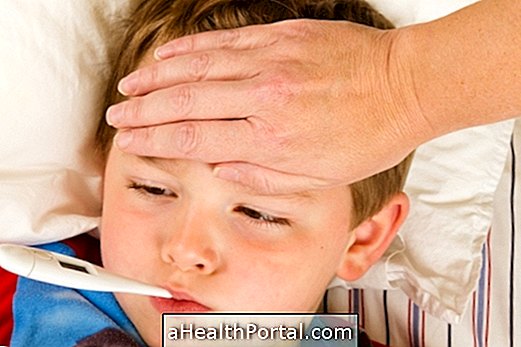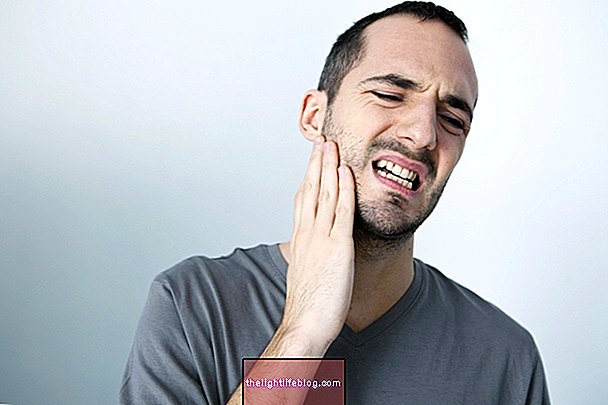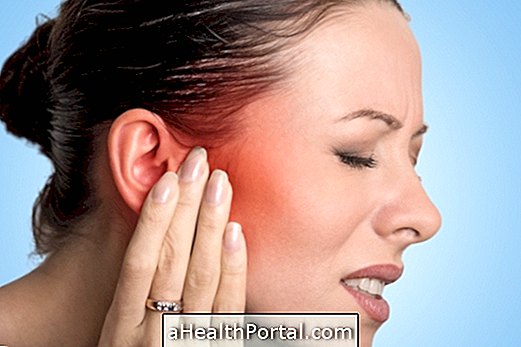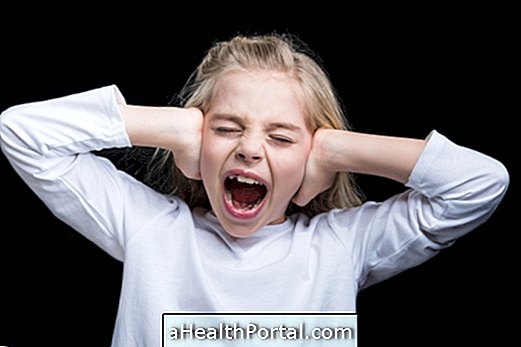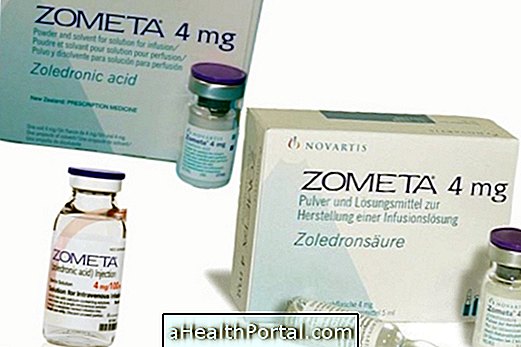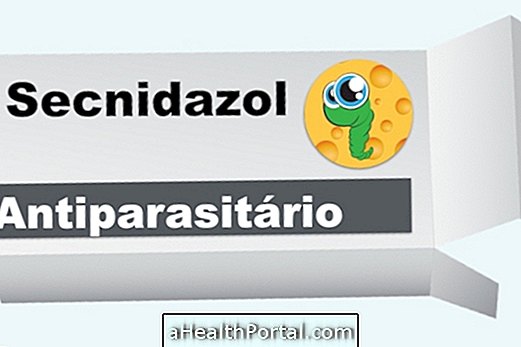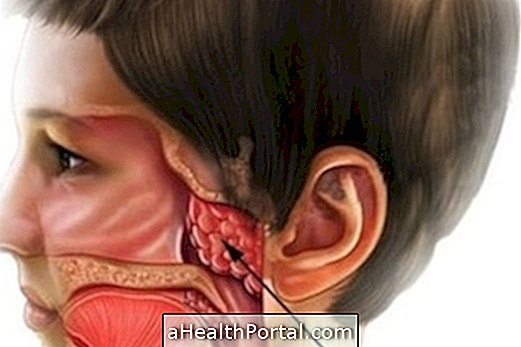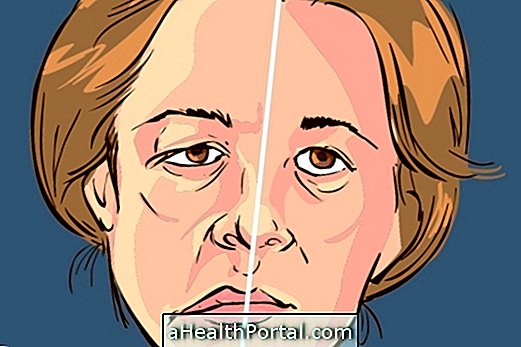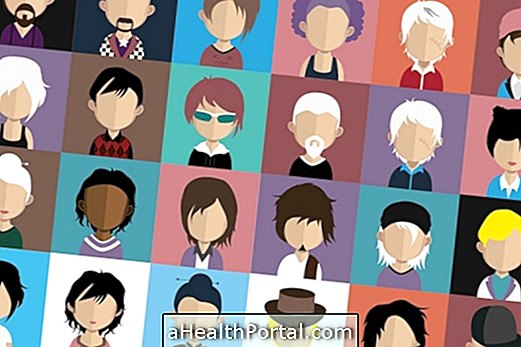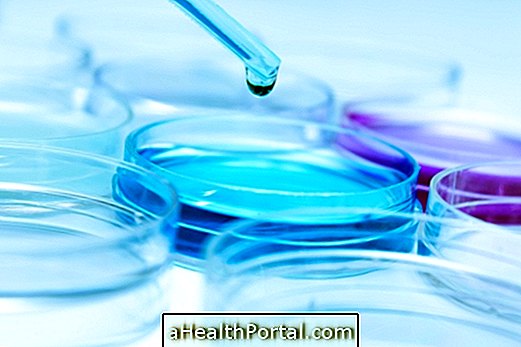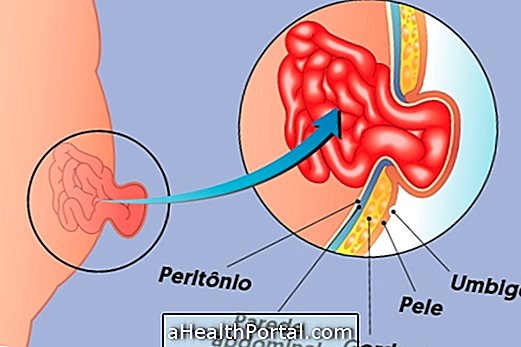There are different types of headache that can occur due to different causes and in different regions of the head. Some types of headache may still be accompanied by other symptoms, depending on the cause that is at its source.
The treatment depends on the type of headache and usually consists of the administration of analgesic and anti-inflammatory medicines or medicines that solve the cause of headache, as is the case of sinusitis, for example.
1. Tension headache
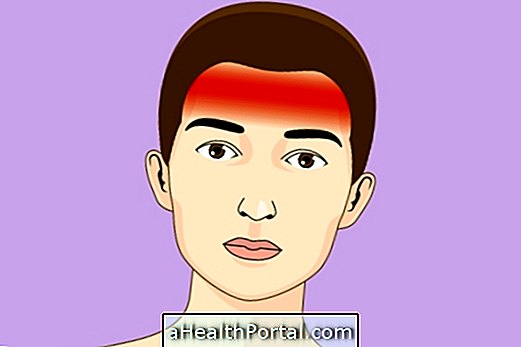
This is a type of headache caused by stiff muscles in the neck, back or scalp, which can be caused by poor posture, stress, anxiety or poor posture during sleep.
The most common symptoms of tension headache are pain in the form of pressure, as if it had a helmet on the head, pain that affects both sides of the neck or forehead and excessive sensitivity to the shoulders, neck and scalp. Learn more about tension headache.
What to do
To relieve tension headache, one should try to relax by doing a massage on the scalp, taking a hot bath or doing some activity, for example. If this does not work, it may be necessary to take analgesic medicines, such as paracetamol, ibuprofen or aspirin, for example.
2. Migraines

Migraine is characterized by an intense and pulsating headache, which can be accompanied by nausea, vomiting, dizziness and sensitivity to sunlight.
This type of headache has an average duration of 3 hours, but in some cases can remain for 72 hours and usually affects more than one side of the head and may also impair vision and cause sensitivity to certain odors and difficulty concentrating. Learn how to recognize the symptoms of migraine.
What to do
The most commonly used drugs to treat migraine are analgesics and anti-inflammatories, such as acetaminophen, ibuprofen or aspirin, which help relieve pain in some people and drugs that cause constriction of blood vessels and block pain, such as triptanes, such as Zomig, Naramig or Sumax, for example.
For people who feel sick and have vomiting, they can take antiemetics like metoclopramide, for example. See other remedies that are used in migraine and that may even help prevent it.
3. Sinusitis associated headache

Sinusitis is characterized by inflammation of the sinuses, which most often cause a headache or face, which worsens when the head is lowered or the person lies down.
In addition to sinus headache, other symptoms such as pain around the nose and around the eyes, runny nose and nasal congestion, cough, fever, and bad breath may occur.
What to do
To treat sinusitis and relieve headache, antihistamines, such as loratadine or cetirizine, for example, decongestants such as phenylephrine and analgesics such as paracetamol, for example, may be used.
If an infection develops, it may be necessary to take antibiotics. Learn more about how sinusitis treatment is done.
4. Headache in salvos

Headache in salvos is a rare disease, characterized by a very strong and severe headache, stronger than migraine, which affects only one side of the face and arises most of the time during sleep.
Other symptoms that may arise during a seizure are runny nose, swelling of the eyelid and redness and tearing of the eye on the same side of the pain. See more about this disease.
What to do
Usually the disease has no cure and the treatments are not very effective, they do not solve the crises, they only attenuate or diminish their duration. The most commonly used drugs are non-steroidal anti-inflammatories and strong analgesics such as opioids and 100% oxygen mask in times of crisis.
In addition to these types of headache, it can also arise due to causes such as hormonal changes, hypertension or head injuries.
